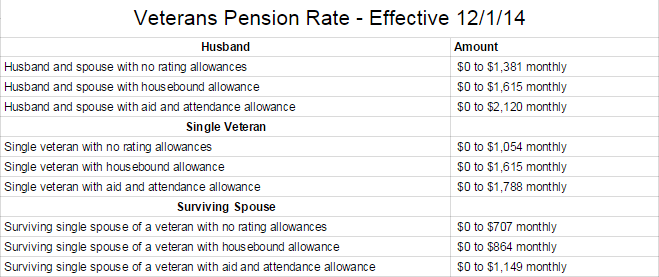The policies for veteran benefits are extremely difficult to navigate without a proper understanding. As a home care agency, you can start making veteran’s lives easier by providing guidance with the Aid and Attendance Benefit. This could lead up to $2,000 per month for qualified veterans and spouses to put directly to home care costs!
Here’s what we will cover so that you have a full understanding of the Aid and Attendance Benefit:
- What is the Aid & Attendance Benefit?
- Qualifications of the Aid & Attendance Benefit
- Aid & Attendance Misconceptions
- Common Questions From Home Care Agencies
- How To Easily Navigate The Aid & Attendance Benefit
All of the information here is from Debbie Burak, founder of Veteranaid.org and Patty Servaes from Elder Resource Benefits Counseling. They are nationally recognized leaders in this industry and have imparted their wisdom so that we may better serve vets in our facilities.
What is the Aid and Attendance Benefit?
The Aid and Attendance Benefit, also known as the Pension Benefit or Veteran’s Benefit, is a tax-free monthly pension to assist wartime veterans and their surviving spouses who require the assistance of another person with aspects of daily living and who meet certain financial criteria.
The maximum award adjusts every year due to inflation. This award does go up with Social Security. For 2015, here are the current amounts:
The benefit comes in as cash so it can be spent on home care, assisted living, home health, other out of pocket medical expenses but it can also be spent on cigarettes and groceries. It does not have to be spent on any specific thing. The deal with the VA benefit is in order to get the benefit, they must spend part of their income on medical expenses.
Important Warning to Home Care Agencies
The pension comes with the caveat that the "funds are non-attachable by anybody but the U.S. government.”
What that means is if you, a home care agency, say to a veteran, “Okay, we’re going to tell the VA that you’re paying me $1,200 a month, but you only have to pay me $500 a month until your VA money comes in and then you can pay me the difference.” When they get their award letter, it always comes with a little disclaimer sheet. And the last thing mentioned on that disclaimer sheet is, “These funds are non-attachable by anybody but the U.S. government.”
So if anybody has told the veteran that they owe them this money, that’s not true. And so you can be in a situation where, let’s say that took ten months and the vet was floating you $800. You can be in the situation where the veteran says, “Hey, I don’t think I have to pay you that $8,000, because this letter right here says that I don’t have to pay you,” and they would be right.
Qualifications of the Aid and Attendance Benefit
There are four qualifications to receive the benefit. To make sense of the complicated process, you can picture the qualifications as a set of stairs.

In order to get to the top, qualifying veterans and spouses have to “step” on each one individually before they can get to the top.
Veteran
Veterans must have served at least one day during a period of war, at least 90 days in total and they were other than dishonorably discharged. It doesn’t matter if veterans were stationed in Knoxville, Tennessee with the U.S. Coast Guard and never set foot on a boat. Veterans did NOT have to go overseas, enter combat or be wounded in order to receive this benefit.
Date Ranges for War Periods
World War I - April 6, 1917 through November 11, 1918
If the veteran served the United States military in Russia, the period is April 6, 1917 through April 1, 1920.
Military service after November 11, 1918 and before July 2, 1921 is recognized as World War I service IF the veteran served in the active military, naval, or air service from April 5, 1917 through November 12, 1918.
World War II - December 7, 1941, through December 31, 1946
World War II service is also recognized from December 23, 1946 through July 26, 1947 IF the veteran was in service on December 31, 1946.
Korean conflict - June 27, 1950, through January 31, 1955
Vietnam era - February 28, 1961, through May 7, 1975
These date ranges only consider if the veteran served in the Republic of Vietnam during that period. In all other circumstances, the period beginning on August 5, 1964, and ending on May 7, 1975.
Persian Gulf War - August 2, 1990, through Present
The date to be prescribed by Presidential proclamation or law but hasn't been declared yet.
Spouse
So to be the surviving spouse of a veteran, she had to have been married to someone who met those veteran criteria. She have to have been married to him at the time of his death. If she wasn’t married to him at the time of his death because she got divorced, then she's considered an ex-wife, not a surviving spouse and not eligible for this benefit.
1 Year Prior to Death
She must have been married to the veteran for at least one year prior to his death. The reason they had to implement that is that in the early ’60s, there were a lot of nurses in nursing homes marrying the dying World War I veterans to get their benefits.
Not Remarried
The third requirement is that spouses cannot have remarried. Now, that requirement did not go into existence until November 1 of 1990 and it can be very tricky if somebody has multiple marriages. And we would never want you guys to be in the position of telling them “no” and having it incorrect.
If you have a spouse where their remarriage is confusing or even slightly raises your eyebrows, seek proper advice!
Medical
The words “aid” and “attendance” are actually a medical rating in the VA system. Because “Aid and Attendance” is a medical rating in the VA system that means veterans need the aid and attendance of another person.
Is somebody doing a standby assist with the shower? Does somebody have to help the veteran with mobility? Does anybody have to actively administer medication? That’s when veterans are really at the level of needing the aid and attendance of another person.
If you have somebody with dementia and they’re unsafe at home alone and so one of your caregivers is there for a couple of hours providing cuing and redirection, we’re at the aid and attendance level.
Income + Asset
The financial criteria for the VA is a two-pronged financial test. Income and Asset.
Income
For VA purposes Income = Income MINUS Regularly Occurring, Unreimbursed Medical. This is absolutely crucial because it’s a math test and it’s up to you to help veterans remember to do the math. The VA is not going to do it for them.
If veterans don’t do the math, their income might be high enough to not qualify for the award when they should because of high medical expenses!
Income:
- Social Security
- Pensions
- Interest and dividends
- Oil well royalties
- Farm income
- Income from a rental house
- Others May Apply
Regularly Occurring Unreimbursed Medical
- Home care
- Medical Insurance Premium
- Expenses because of things like Dialysis - things like this do count!
NOT covered as Regularly Occurring Unreimbursed Medical
- Prescriptions
- Eyeglasses
- Hearing Aids
- Other various items
It’s important to note that prescriptions are not included in the Regularly Occurring Unreimbursed Medical definition. The VA views prescriptions as something that could change, so it’s not regularly occurring.
What To Do For Veteran Or Spouse in Partial Situation
Here is an example to show how non-regular expenses can apply to the benefit amount:
A surviving spouse is awarded $130 monthly. Her max amount is $1,300 so she’s got $1,000 a month that she left on the table.
The VA is technically giving her $1,130 a month but keeping what she doesn’t qualify for because of her financial situation. That extra $1,000 a month is just sitting for her over at the VA.
To recover some of the withheld award, this spouse could submit some of her non-regular medical expenses such as prescriptions and hearing aids. Anyone can submit these types of expenses to the VA as unreimbursed medical expenses and the VA will reimburse them dollar for dollar until they’ve eaten up the whole $12,000 that they left on the table. So not getting the full award is not the end of the world that some people would lead you to believe.
Asset
Veterans or Spouses with a large amount of assets can be disqualified for the award. But there is NO $80,000 limit. People with over $80,000 in assets have received the award because the decision is made relative to their situation.
Age, illness, income (remember to subtract the medical expenses) are all considered.
Anytime veterans have more than $80,000 in assets, the VA can use judgment to decide that they have enough assets. If a vet has less than $80,000, the VA cannot use judgment to decide if they have too much in assets.
What is an asset?
Just like income, the VA thinks of assets a little bit differently. Countable assets are everything except for one house, one car and personal possessions. There is no limit on the worth of the those assets either. Don’t forget this!
Now, people get in a lot of trouble because they think, “Oh, my home doesn’t count,” and then they sell it. And what do they get for that? They get cash. And what counts? Cash.
So veterans' homes do not count unless they sell it or rent it. If they sell it, well, now they have some cash and that counts. If they rent it, it’s an investment property and investment properties count. So it’s very important that veterans know if they’ve got the benefit and sell the house, their situation changes and they will have to contact the VA to handle it appropriately.
Aid & Attendance Misconceptions
Non-Medicaid Spouse
When a veteran or spouse is in the nursing home on Medicaid, the non-Medicaid spouse, the person living at home can still get the full benefit.
A surviving spouse who now needs home care, whose husband is in a nursing home can still qualify. If they are married, the spouse can still get up to $2,085 a month if she needs home care.
A veteran living at home whose wife is receiving home care can still get $1,380, meaning the veteran is fine. Maybe he’s out golfing while your staff is there taking care of his wife. He can still qualify. People often think, “Oh, it has to be the veteran who needs care in a married couple.” That’s not true.
Reapplication Process
Another common myth, if denied, is that veterans have to wait a year to try to reapply. That’s not true.
And a lot of folks race out and do an appeal when they get a denial letter. That is the longest way to go in the last avenue of resort that they would want to take, because the average time for an appeal to be settled is over 600 days.
If a veteran or spouse gets an appeal or denial, the first thing to do is read through it and say, “Is there any way that we can do what’s called a ‘reconsideration’ by providing additional support or evidence to the VA?”
As home care agencies, we should look for ways to avoid an appeal and also look for aspects of the application process that might have been overlooked such as how to calculate income or war period dates.
Common Questions From Home Care Agencies
***Have a question that you don't see? Submit your question to us and we will see if we can answer it for you and then add it here for every agency to learn from!***
What are the general rules regarding divorce?
If a spouse were divorced from the veteran at the time of his death, they are not that veteran’s surviving spouse and cannot get the benefit. However, if the spouse were married to a veteran and he died while you were married to him, that’s the only way to pass that qualification.
The spouse was married to a veteran and he died. That’s the only way to become a surviving spouse AND she remarried and she was lucky enough that that guy she remarried (who was not a veteran) died before November 1, 1990 or she divorced him before November 1, 1990, so she can go back to her first husband’s service.
But what if she were married to him at any time after November 1, 1990?
Her first husband died in the ’70s, she married somebody else in the ’80s and divorced them on October 31, 1990. All she needed was to have started the proceedings, it doesn’t have to be final, then she can get the benefit. If she didn’t start divorcing him until November 2, she is out of luck
Is it possible to know how much the veteran or spouse will receive before they submit the application?
Based on their income level for VA purposes, you can gauge how much they will receive.
If they have zero or negative left in income for VA purposes, they’ll get the full benefit. This means that their Income Test (refer above) equals zero or negative.
For veterans and spouses with positive income, the award will be the difference between the max amount and their income.
An example using a surviving spouse. The maximum she can get is $1,130. If she is positive $1,000 after we minus out her home care costs, then we would look at the pension of 1,130, we’d minus $1,000 and she would get around $130
If you have received a letter saying that the veteran has been approved, but then no check follows for over a month, how do you get the VA to pay up?
VA pays everything one month in arrears. So if it says September 1, you’re not really supposed to get a payment until the first week of October.
So the first thing you want to do is wait until the first week of the month after the VA says they’re going to start paying you. So September 1? You’ve got to wait and give them at least until October 5.
Then the other reason that benefits are likely not being deposited is because you have changed bank accounts and closed the bank account where the money was supposed to be deposited. So when that happened, instead of writing you a letter saying, “Golly day, your bank account isn’t working,” they just sit there on the money waiting for you.
As a home care agency, do we need any certifications or special licensing to receive the money from the clients?
No, the client receives cash. You are not getting the VA benefit itself.
How To Easily Navigate The Aid & Attendance Benefit
Skip to minute 56 for demo on how Tag Management can make this process simple and quick!
Why Use ClearCare?
We have already identified the need for technology as baby boomers will either make or break an agency. ClearCare takes the burdensome process of the Aid and Attendance Benefit and turns it into an easy online document. There is no extra cost to use this resource because it is included in every software package we offer.
Free Veteran Aid Benefit Checklist
Going through this process by hand leaves a lot of room for error. We have made this checklist to faciliate this process and make sure you don't forget any step. You have all the resources and knowledge, now go help your veterans receive what they deserve!












